type locality & bionomy
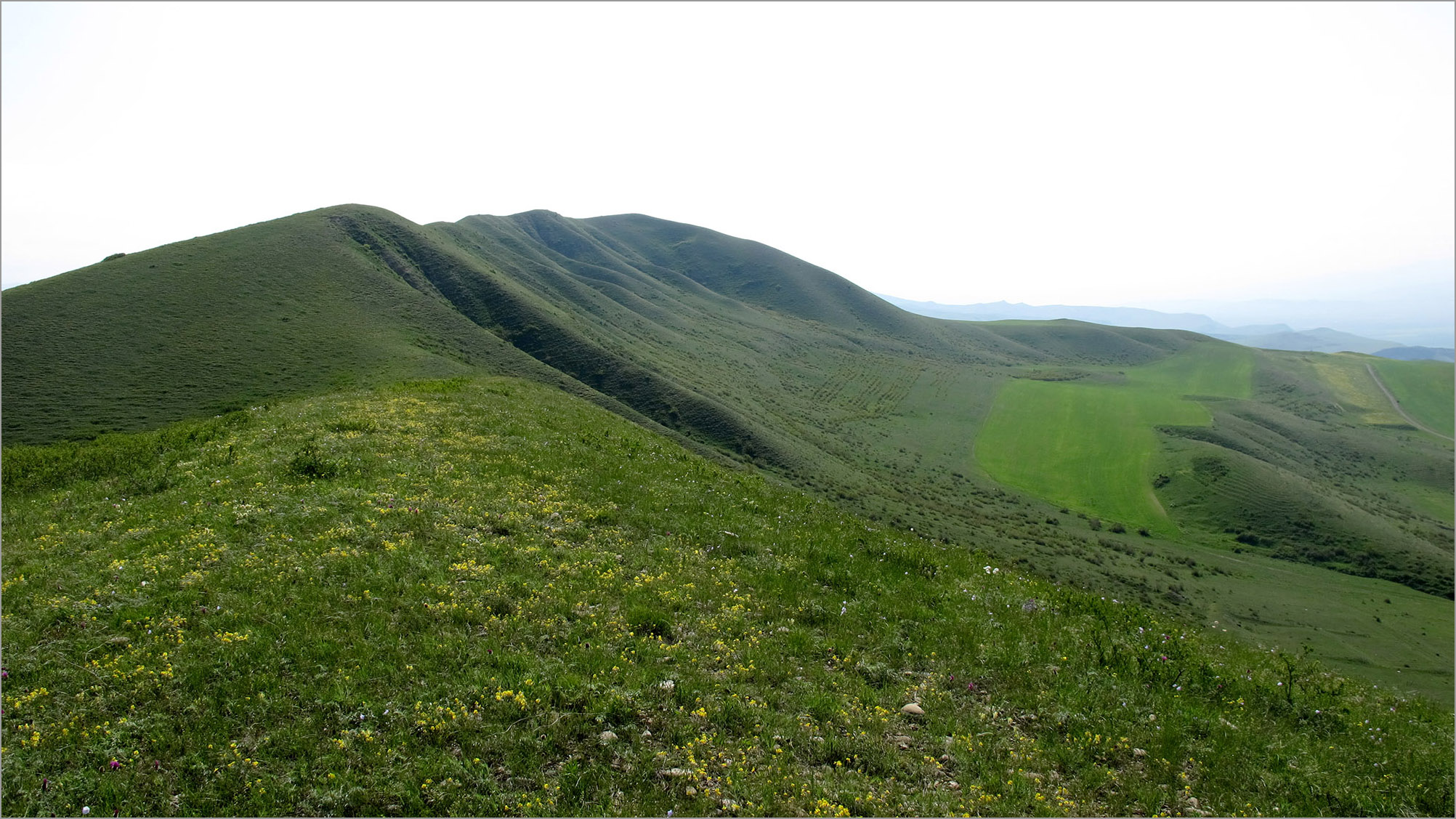
[Photo © Lubor Havlík]
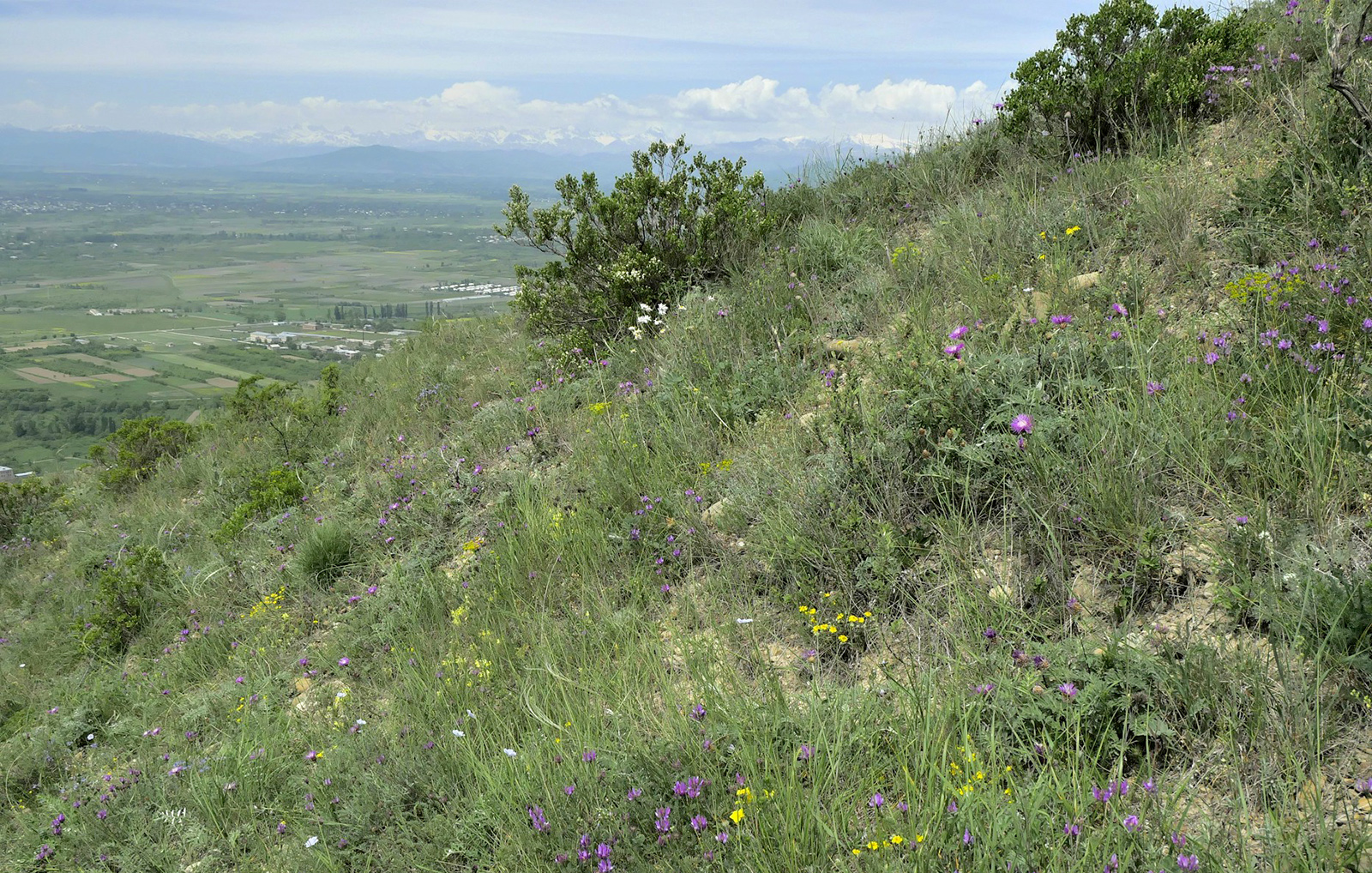
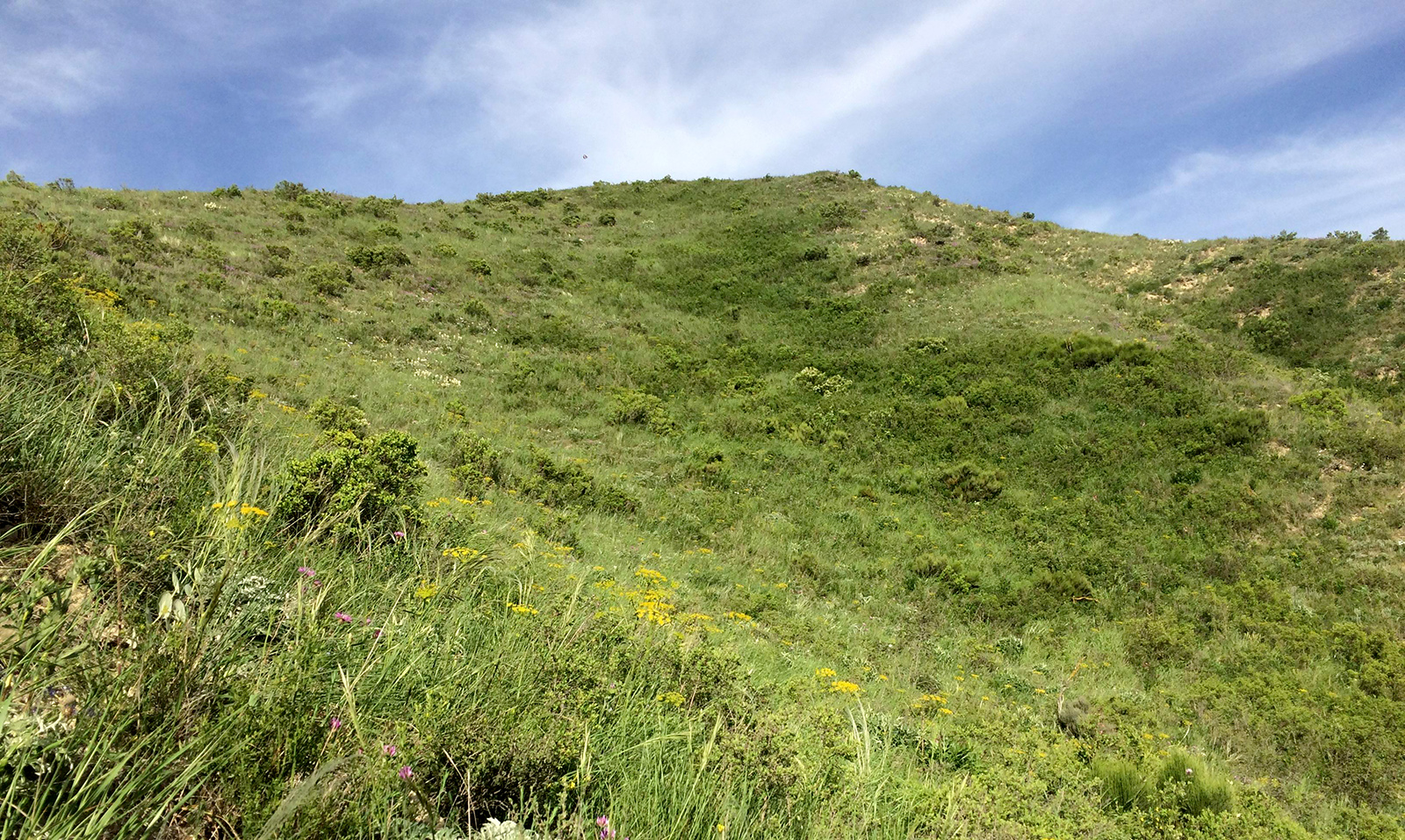
[Photo © Jacek Kurzawa]
A type locality of Conizonia (Conizonioides) georgiana (Navrátil & Rozsíval, 2016): Meadows and pastures 4 km NE of Gori (N42°00′28″ E44°9′37″; 950-1050 m a.s.l., Shida Kartli region, Georgia).
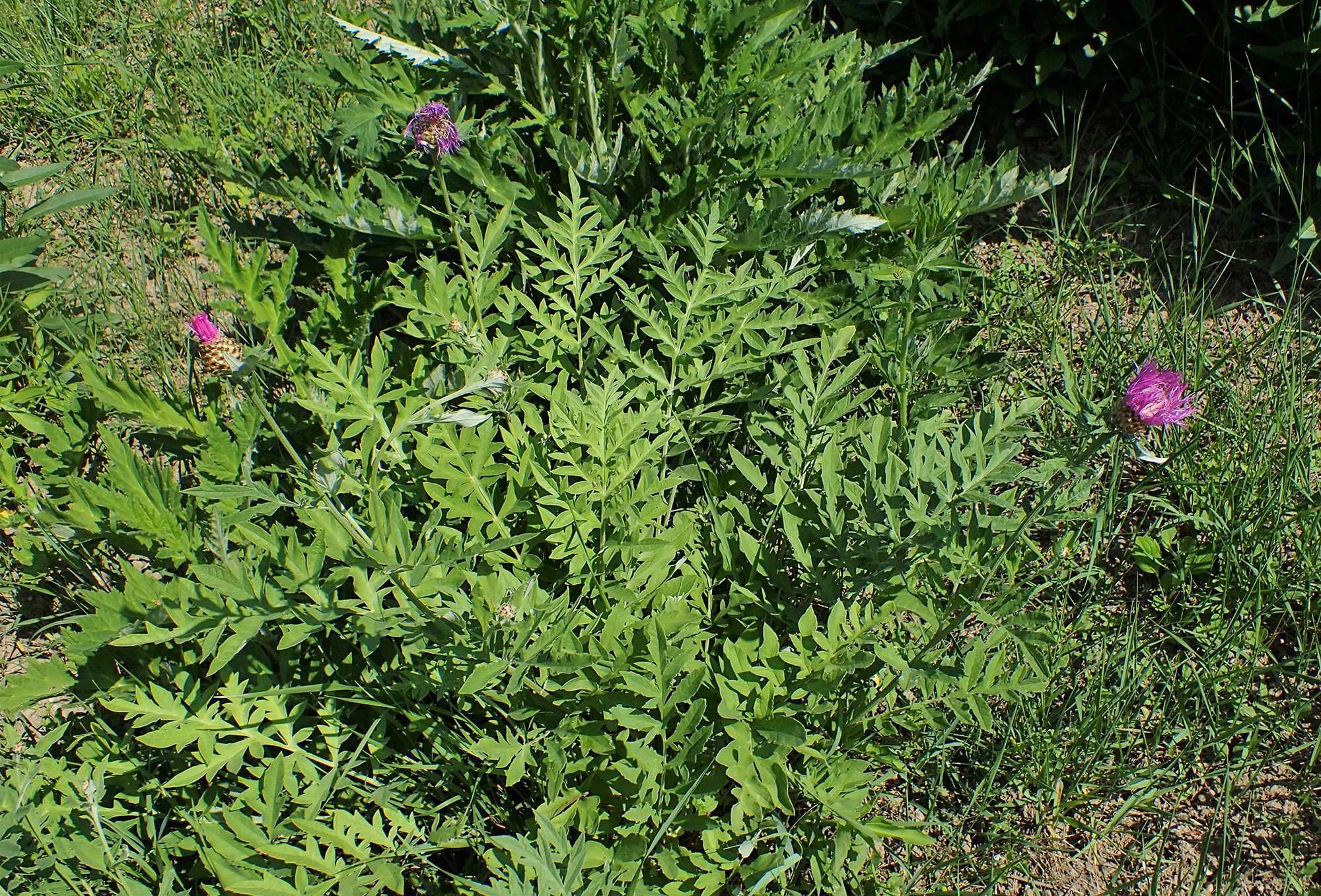
[Photo © Krzysztof Ziarnek]
Transcaucasian cornfower, Centaurea transcaucasica Sosn. ex Grossh., the host plant of Conizonia (Conizonioides) georgiana (Navrátil & Rozsíval, 2016).
The bottom three pictures show locality and stands of host cornflower with last year's leaves and stems (photos taken in November in Tbilisi environs, Georgia).The host plant primarily inhabits slopes created by landslides, rock erosion, and gradual crumbling. Such slopes are often very steep, dry, with poor vegetation and many bare areas of clay, sand or gravel (often pastures with vegetation cover damaged by intensive grazing and subsequent erosion). The host plant was also found on wetter slopes among grass or moss, but not a single infested plant was found in such locations. C. transcaucasica usually grows island-like in clusters, continuous growth was not observed. A cluster usually contains 3-10 main roots suitable for C. georgiana development.
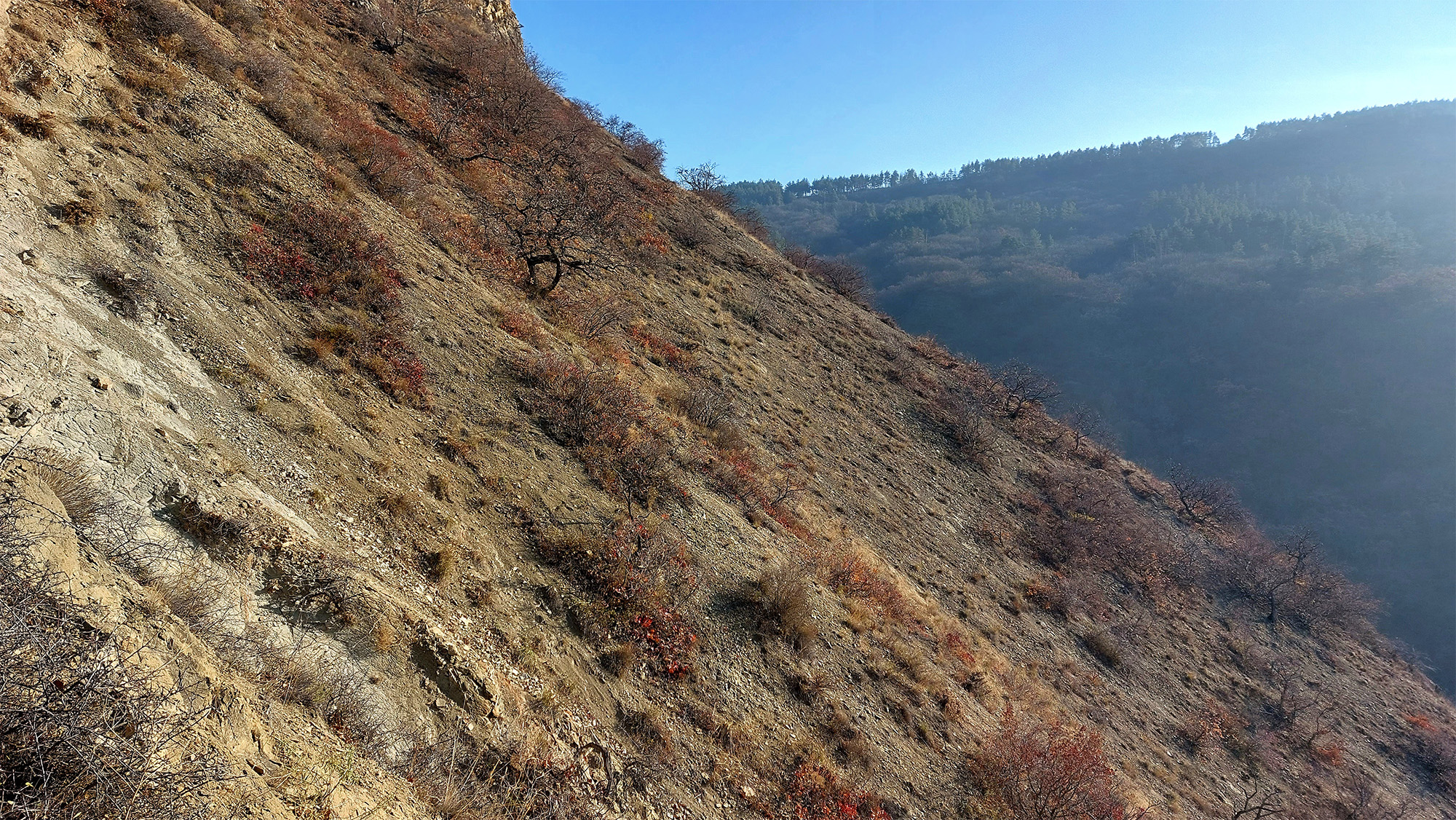
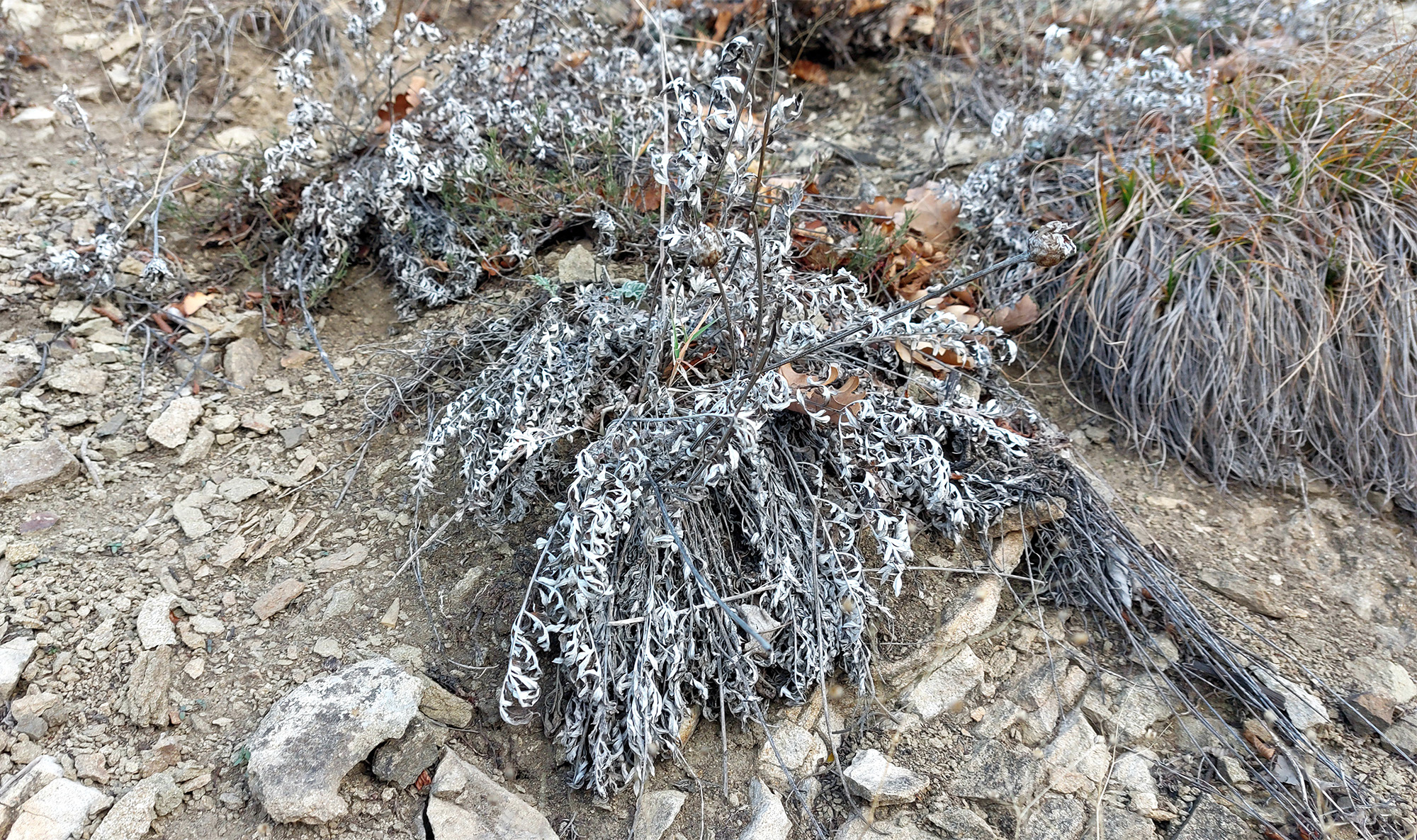
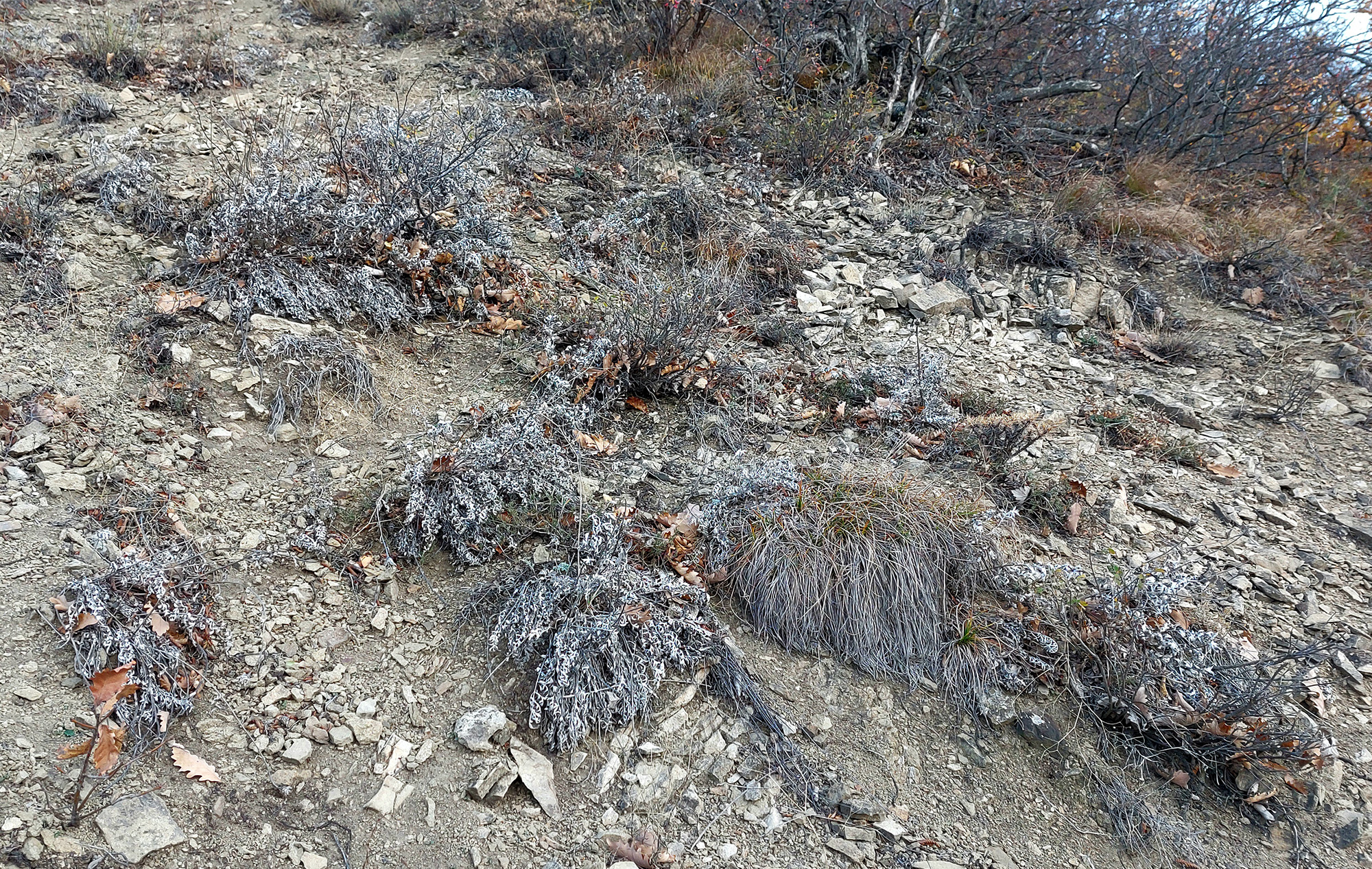
[Photo © Petr Papoušek]
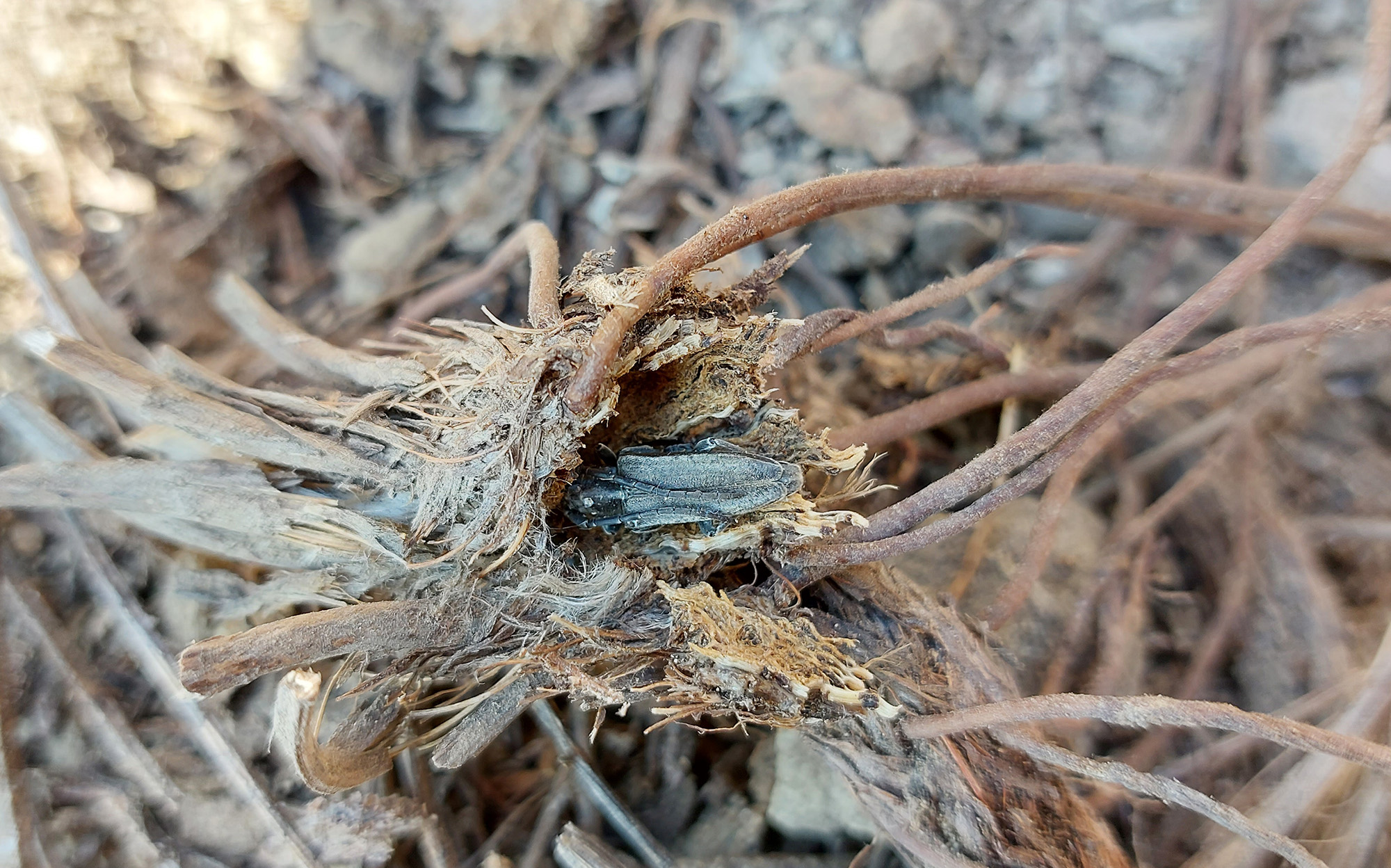
C. georgiana adult in open pupal cell [Photo © Petr Papoušek]
Larvae of C. georgiana develop in the basal stalk parts and roots of the Transcaucasian cornflower, but infested plants are unlikely to die. Infested cornflowers were found with ready buds and shoots for the following spring. At the end of summer, the larva creates a pupal cell in the strongest part of the root (mostly more or less at ground level or up to 10 cm underground). It is estimated that more than half of the individuals pupate and hatch immediately, then the adults overwinter. A smaller part of the population overwinters in the larval stage, which then pupates in the spring.
However, smaller young larvae (ca. 5 mm) were also found in the roots, which did not have a prepared pupal cell. It can therefore be assumed that this species has a two-year life-cycle for at least part of the population. It can also be inferred from the size of the plants in which they were found. In large clumps with many spent flowers and stronger roots, there was a better chance of finding adults or praepupae. On the contrary, only smaller immature larvae were usually found in the roots of smaller plants with a minimum of blossomed flowers.
Infested plants cannot be distinguished from non-infested ones. To find the larvae/images in the roots, it is necessary to pull out each individual root and examine it. The larva does not girdle either the root or the aerial part of the plant.
[ We thank our friend Petr Papoušek for providing detailed information on the bionomy of the species obtained during his November expedition to Georgia. ]
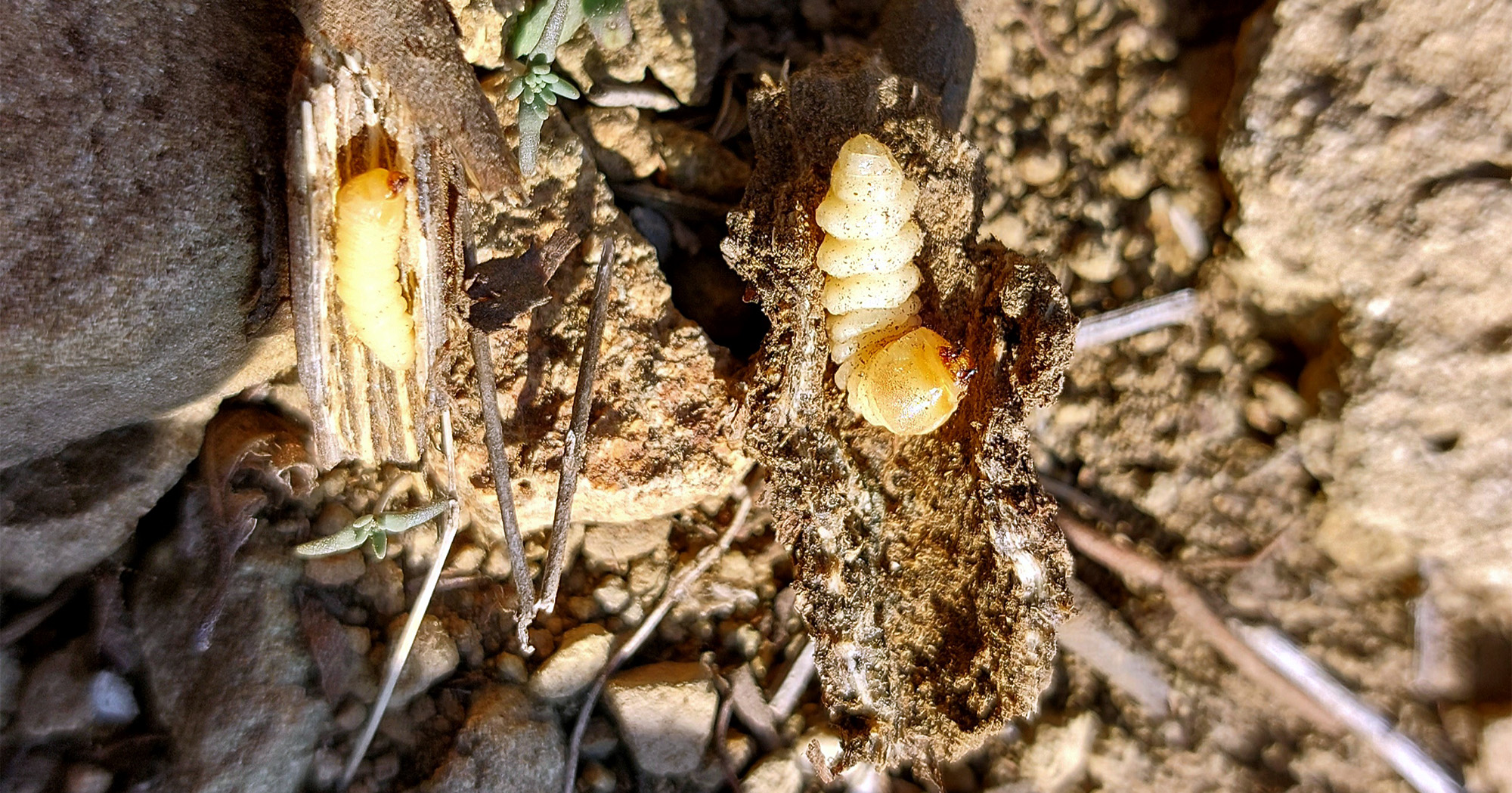
C. georgiana larvae: young one in the side root and praepupa in pupal cell (main root) [Photo © Petr Papoušek]
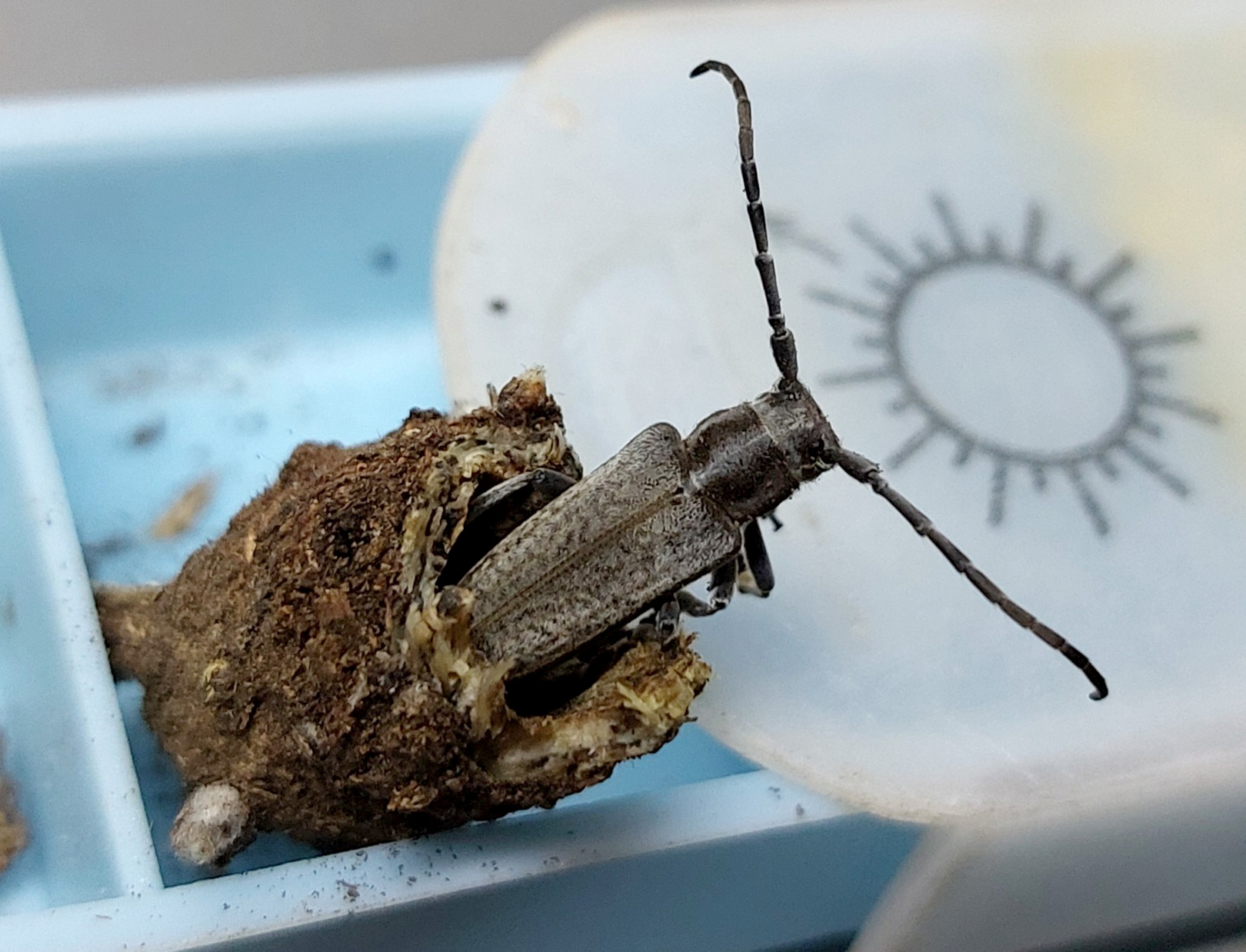
Freshly emerged C. georgiana leaving the pupal cell [Photo © Petr Papoušek]
